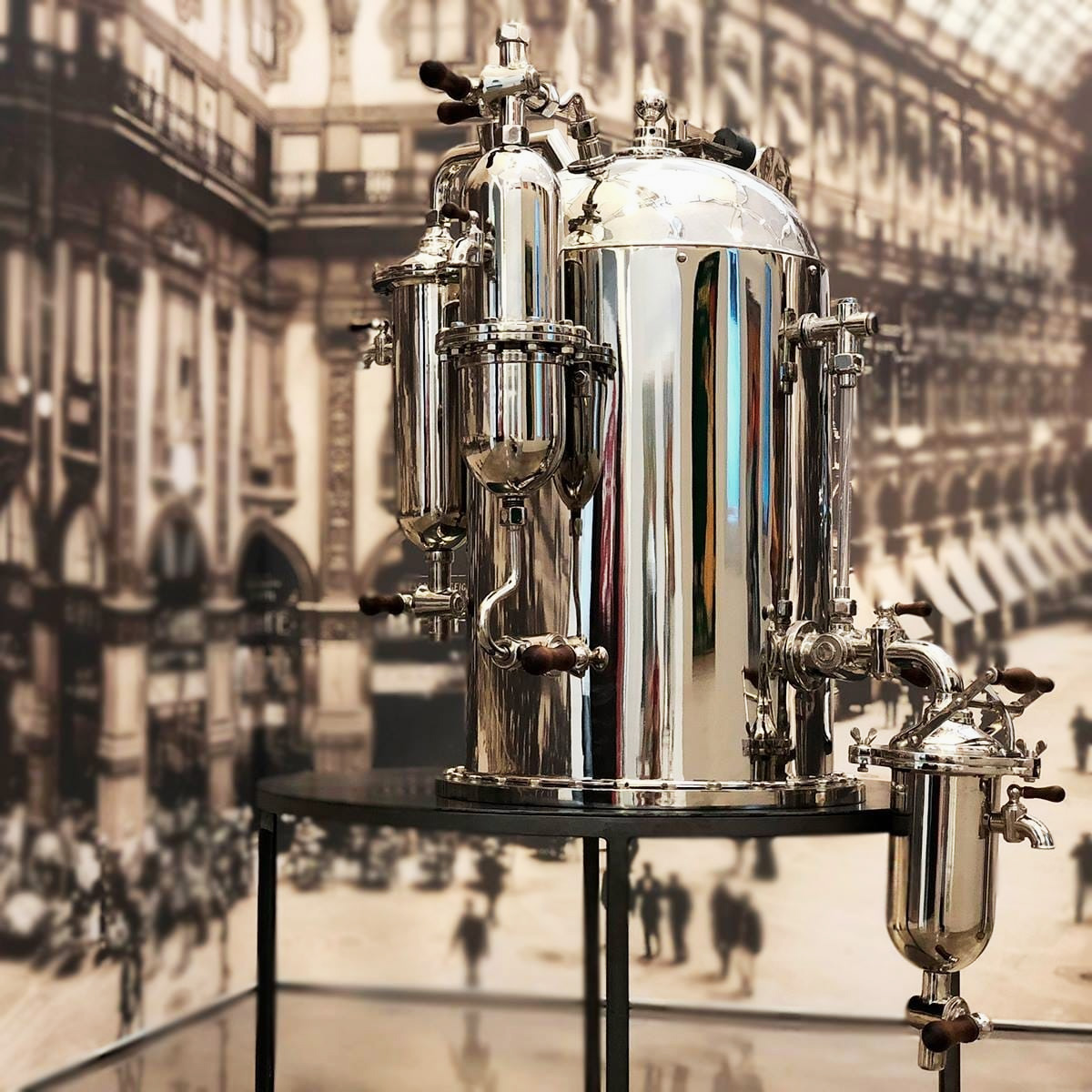 A replica of Angelo Moriondo’s 1884 machine, reproduced by Enrico Maltoni’s coffee machine restoration company, Officina Maltoni. The machine is on display at the MUMAC museum in Milan. The reproduction is made from cast brass with galvanised nickel plating.
A replica of Angelo Moriondo’s 1884 machine, reproduced by Enrico Maltoni’s coffee machine restoration company, Officina Maltoni. The machine is on display at the MUMAC museum in Milan. The reproduction is made from cast brass with galvanised nickel plating.
Enrico Maltoni is an author and collector of coffee makers, books, and patents. Since 2012, his personal collection of over 10,000 patents and historical documents pertaining to coffee makers has been housed at the Museum of Coffee-Making Machines in Milan. This museum, which he founded in association with the Cimbali group, is host to the largest archive of coffee design documentation and patents in the world.
Enrico has authored several books on the history of coffee makers, including the encyclopedia Coffee Makers: Macchina Da Caffe. In this interview, جيسيكا سارتياني asks Enrico about the work of Angelo Moriondo and how his patent helped to shape future innovations in espresso coffee.
Jessica Sartiani- We understand that spirit burners had their limitations due to how long it took them to heat up the water. Was Moriondo’s machine powered by natural gas or kerosine?
Enrico Maltoni – It was powered by wood, having a stove under the machine, or gas [which] in the late-nineteenth century was called Benzo Carburo.
JS – Do we know what device was the first to use electricity as a heat source?
EM – To date, that information is not available, but in my opinion, most likely it was Bezzera or La Pavoni. Electricity arrived in Italy in the late 1800s in some cities.
JS – In your book, you have subdivided the many coffee makers into categories, such as steam pressure coffee makers, or percolators. Does a particular invention stand out for you as being the first espresso machine, or do you think of it more as a progression?
EM – For me, the first is the Moriondo machine,